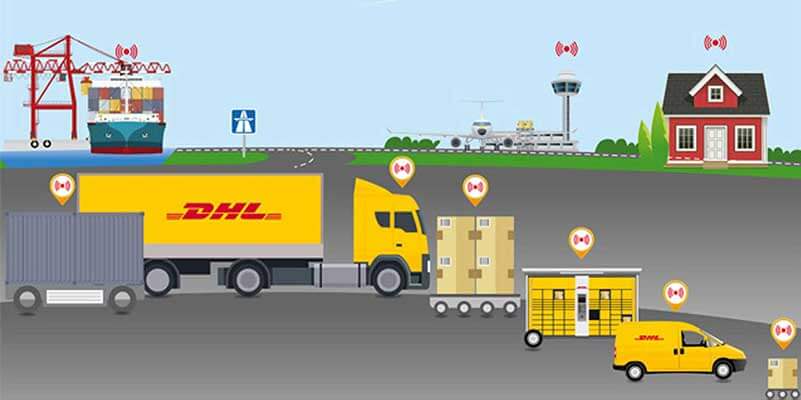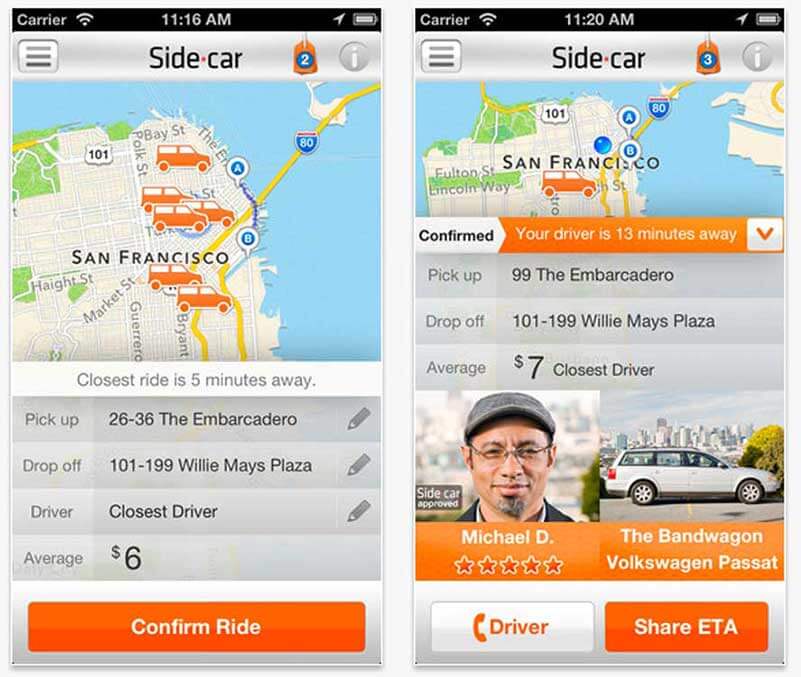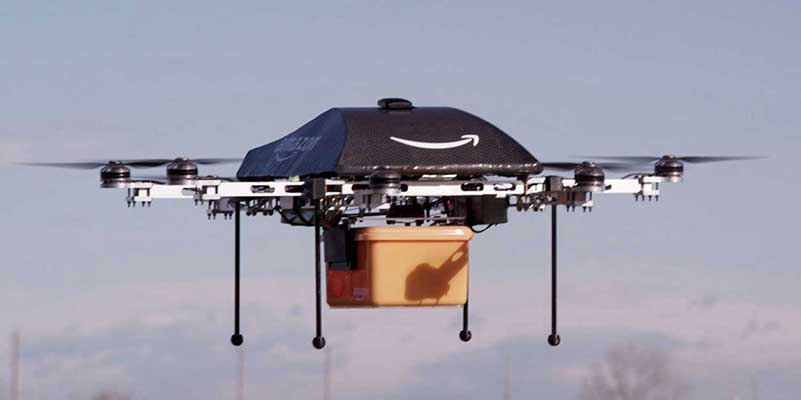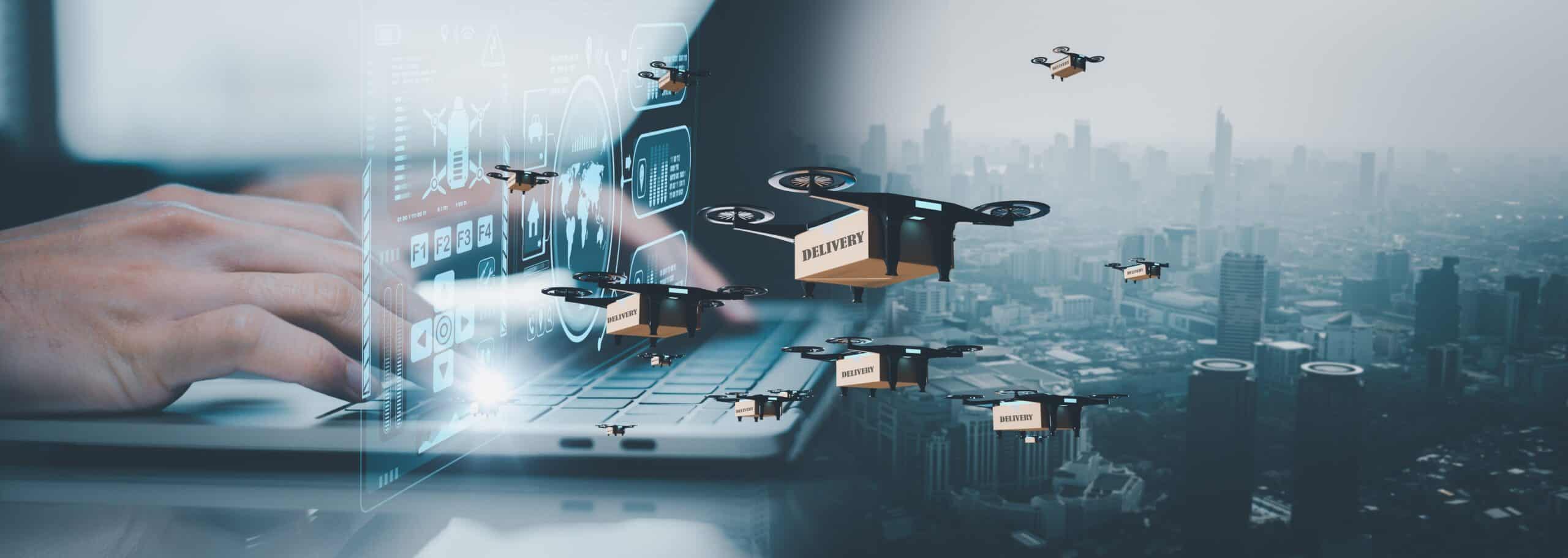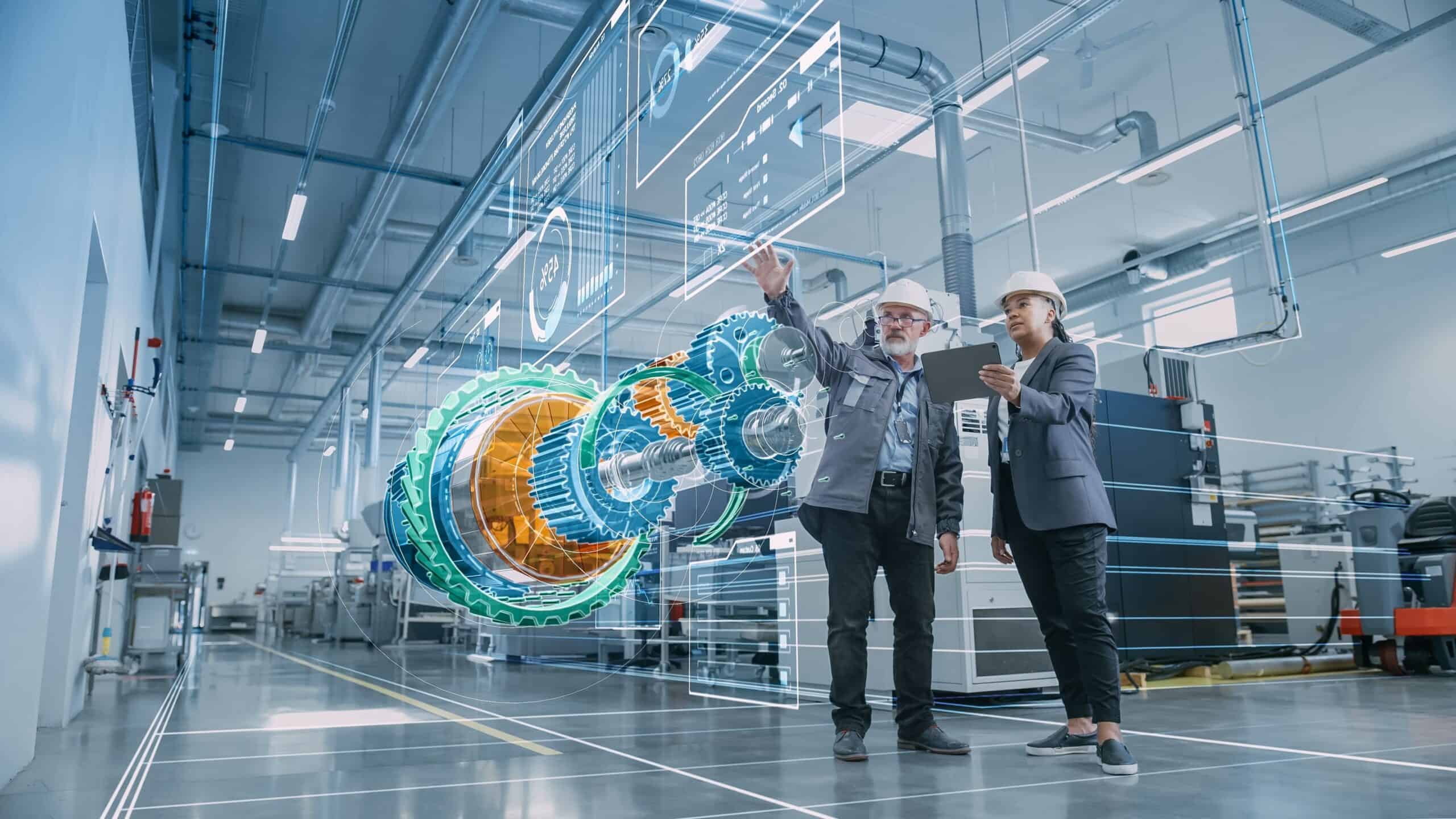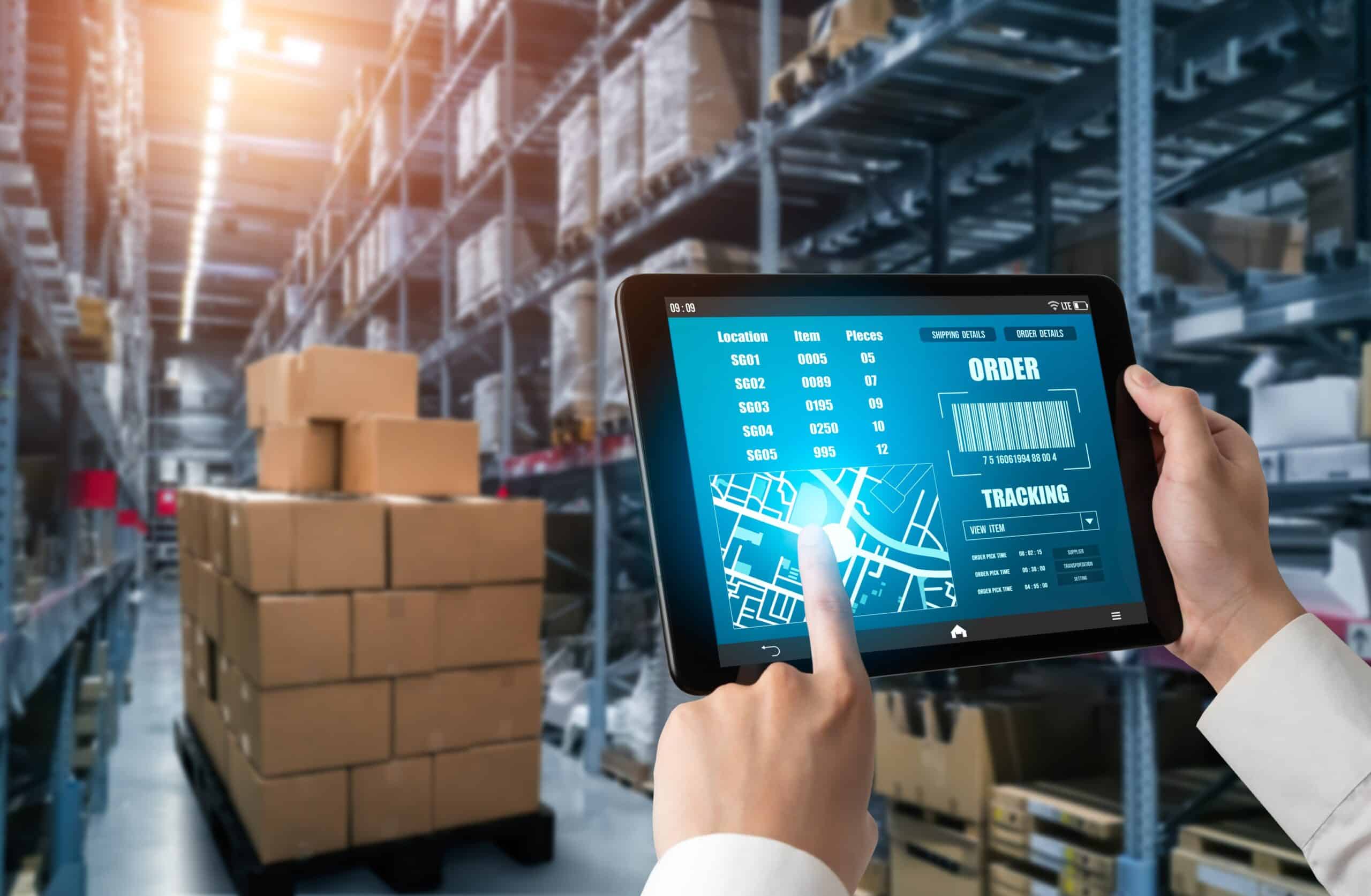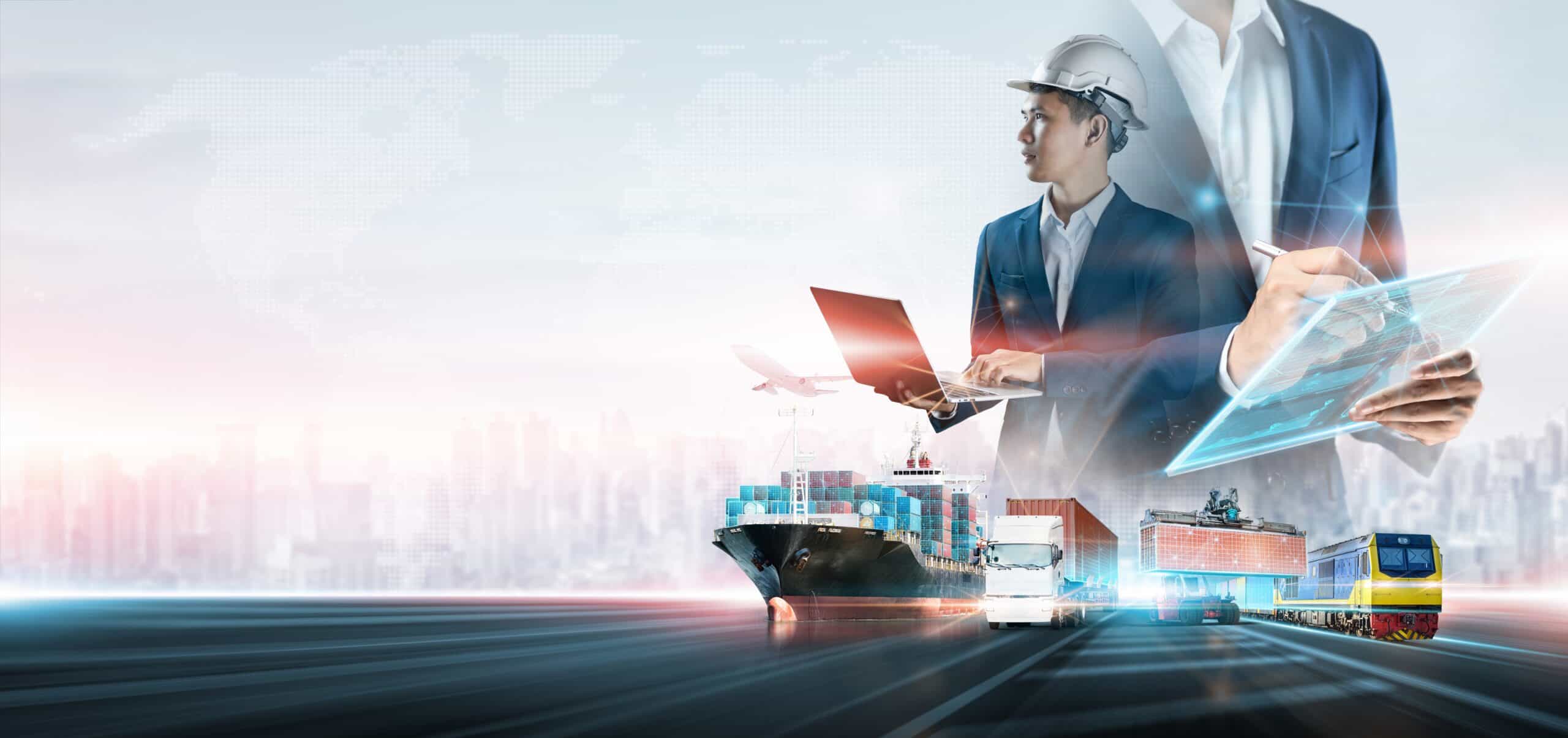Logistics is a very broad term. It involves the delivery of smallest things to retail consumers (for example, earphones) as well as tonnes of freight delivered from one country to another. The enormous scope and variance of operations makes it vulnerable to the slightest shift in technology, which is followed by a massive change in point-to-point delivery. In this post, we will have a look at similar technological shifts that will revolutionize the future of logistics. Will underground tubes and intelligent delivery drones rule the supply chain or will the Internet of Things redefine point-to-point logistics? We may also be looking at complete automation of logistics in the time to come! Does that mean more unemployment or the advent of new opportunities? Let us have a look at the eight predictions that will shape the future of logistics.
1. Underground tubes will make product delivery completely efficient (or will they?)
Recently, Mole Solutions received a grant from the Government of UK regarding a study in Northampton which aims at finding out the feasibility of underground delivery networks. The idea is to facilitate transport of goods in driverless steel carts through underground tubes. These carts will be powered by magnetic waves produced by electricity. Although the technology may sound new, it is already operational above the ground in the form of maglev trains. Therefore, the positivity around the idea is bullish. Even I am very optimistic about it as we are looking at something which could revolutionize the future of logistics and also reduce traffic and air pollution.
Video Credits: Mole Solutions
We might be seeing lesser traffic jams, with goods reaching their desired locations at high speeds and according to the scheduled time! Even today, extensively used commodities such as oil, gas, water, and electricity are transported across the globe through underground networks. This makes our current research look all the more feasible. I would be interested in finding out whether logistics companies get on board with the idea immediately or take their time. If the study proves fruitful, then early investment could lead to potential market domination. As these new methods sound more sustainable and eco-friendly, customers will be attracted to firms which provide such channels of delivery. Therefore, the process of finding alternate channels for efficient logistics is inevitable. So, why not join the race being an early bird and reap the rewards? The research has invited skepticism as well! Many believe that this kind of development is slow and costly, and may incur many obstacles such as unfriendly neighborhoods and political protests.
Some of the major issues which need to be kept in mind are:
- Ground stability
- Vibrations and noise
- Complete guarantee on reliability and safety
- Establishment of depots and storage facilities to support such networks
However, the final results depend on the outcome of the study. Such developments have been a part of human history and we have seen people realising the benefits sooner or later. The future of logistics depends on studies such as these and I believe they are important in terms of finding alternate and sustainable channels of delivery. What do you think?
2. Did you know that 14% of the GDP comes through logistics for Eurozone countries?
One can speculate about the future of logistics by looking at this infographic. It showcases the current and possible trends regarding logistics in the Eurozone, which holds a major share in the entire industry. Any market change in the logistics industry will have an immediate impact on the nature of operations here. As we can see, nearly 4 billion tkm (1 tkm = 1000 kgkm and 1kgkm = moving 1 kg of cargo over a distance of 1 km) is delivered daily! More than 11 million people are employed in the European logistics sector and 23% of those are found in the post and courier branch. The contribution to the GDP (at 14%) makes logistics a prime source of revenue for the entire Eurozone. When ranked in descending order, the top European countries in logistics are :
- Germany
- The Netherlands
- Belgium
- The UK
- Sweden
I think that the advancements in these countries can give us a precise idea about the future of logistics. For instance, an increase is estimated in consumer spending until the year 2020. This means increased manufacturing, increased logistics operations, and consequently higher revenue. The need to develop better and efficient delivery channels seems paramount. In 2013 alone, the Frankfurt Airport recorded the maximum cargo growth in history at 2.1 metric tonnes. The Hamburg Airport invested EUR45 million to modernize its airfreight facilities. The aim was to expand the storage capacity to 150,000 tonnes of cargo. Recent outsourcing and specialized services have opened up opportunities for more firms to get on board with a business which looks bullish for the next ten years or so. That is enough time to turn around your investment and make heavy profits. Nevertheless, the road to such numbers is not without challenges.
Some major challenges faced by the Eurozone logistics sector are
Cost cutting:
Mileage tax and eco-tax have been initiated in more European regions, making cost cutting a difficult objective to attain.
Sustainability:
The European Commission has indicated that 30% of road freight which moves over 300 kilometers should be shifted to an alternate means of transport. Doing this is difficult, slow, and extremely expensive.
Increasing cost of experimentation:
Companies are looking for alternate means to become more fuel efficient. This involves experiments on green fuels and solar energy which adds to the cost of operations.
Labor shortages:
We might see an increase in diversity of warehouse employees and drivers due to lack of local employees. This might increase the health and safety compliance responsibilities for companies.
My expert advice:
The road ahead might be bullish and filled with opportunities but people involved should be aware of the issues associated with the future of logistics and work symbiotically to alleviate the same.
3. The Internet of Things will affect logistics more than any other sector in the time to come
In our previous posts, we saw how the Internet of Things (IoT) is set to revolutionize every major industry. By 2020, nearly 50 billion devices will be connected to the internet and will be able to transfer and receive information. A recent study by DHL in collaboration with Cisco Consulting Services outlines the ramifications of IoT on the logistics sector. The DHL Trend Research Report claims that no other industry will be impacted more by the IoT than the logistics sector. We could see revolutionary changes in supply chain, powerful delivery efficiencies, and maximum cost-efficiency. The value at stake is about USD1.9 trillion! So how are the different areas of logistics going to be affected by the IoT? Smart inventory management will remove the efficiency discrepancies of the warehouse. The idea is to use low-cost, tiny identification devices to tag individual items in a warehouse. This way, managers can find and move items in more efficient and productive manner. Sensors and internet-connected cameras will enhance real-time inventory control. For instance, these sensors could automatically reduce or increase the temperature of the entire warehouse to optimum levels.
We might also see better tracking of shipments. Sensors would be able to indicate the integrity of a package. If someone opens it, the firm would know! Sensors could also monitor the usage and idle times of trucks and thus help in increasing productivity. Cameras and sensors connected to the cloud could help in guiding long-range truck drivers regarding their health by monitoring fatigue levels through indicators such as blink frequency!Lastly, IoT can help address the major issue in logistics: The final delivery or the ultimate customer experience. The aim will be to create real value for the end customer. New business models are already being researched, where the aim is to monetize and optimize the return trips which delivery drivers make. I believe that each and every aspect of logistics can benefit greatly from the IoT. However, this is not the case with other major businesses. What do you think? The key here for the current logistics industry is to realize the importance of integration with the IoT and capitalize on the immense related opportunities.
4. Uber wants a pie of the logistics business: Joins the bid for Here, Nokia’s digital mapping service
Uber is the first name which comes to mind when you need a taxi. Just open your smartphone app, and within seconds, you have the contact details of cab drivers. Now Uber is all set to change the future of logistics with its latest bid on Here Maps, Nokia’s digital mapping service. The goal is simple: deliver people and things within cities as quickly as possible. Currently, the firm relies heavily on Google Maps and is taking consistent steps to remove the dependency.
The bid is placed at a staggering USD3 billion! Uber faces tough competition from automobile giants, including BMW, Audi and Mercedes Benz, who have teamed up with Chinese search engine Baidu and offered a bid of their own. Nokia is expected to announce the sale soon! Currently, Here Maps holds more than 80 per cent of the global market share in built-in car navigation systems and spends millions each year on updates. The multi-billion dollar battle for Here Maps is a clear indication of the growing importance of digital mapping in transport and logistics services. As more and more companies such as Amazon and FedEx put their products on the internet, digital mapping will become the prudent solution for solving delivery inefficiencies. Jamie Moss (an analyst at the tech research firm Ovum in London) clarifies that it is very difficult to obtain such mapping data. Google and Here are the only two major players in digital mapping at the moment.
Uber’s plan to enter logistics has been in the works for some time now. In March, it acquired deCarta, a decade-old mapping software company based in San Jose, California to boost its mapping efforts. It is likely that the future will not be affected by those who take control of digital mapping. The significance of this is that licensing and leasing out of mapping services is bound to take place and result in specialized logistics services. The future of logistics can benefit greatly from digital mapping by increasing efficiency of drivers, mapping warehouses and storage facilities, and tracking moving cargo. What is your opinion?
5. EU-funded research aims at making logistics completely automated and error-free:
Most factory operations have been automated over the past century; yet, logistics is heavily dependent on manual labor even today. However, we may be looking at complete automation of logistics, courtesy of research being conducted on Automatic Guided Vehicles (AGVs), funded by the Eurozone. It is called the PAN-ROBOTS project and has six partners from five EU countries. The aim is to provide innovative technologies for automating logistics in Factories of the Future (FoF). These AGVs can be improved exponentially by using devices such as cameras, laser scanners, and 3D mapping of facilities. An example of such an improvement is a stereo camera with ‘fish-eye’ lenses mounted on top of an AGV. It uses 360-degree views and laser scanners to ensure zero blind spots and guarantees safety of workers. It can go around corners and can reverse smoothly. It can also map obstacles in its path and stop when required. Early tests of this technology have already been conducted at Coca-Cola’s bottling plant in Madrid, while real-world validation will be carried out at the Bilbao factory before October.
I believe such technologies must be used more extensively and across various kinds of logistics services. Such advanced AGVs use 50% less energy compared to manual forklifts and are much faster in terms of operating speeds. Thus, we might be looking at machines which provide an error-free as well as sustainable work environment in the “Factories of the Future.” We might see them on full scale in factories in the next few years. There is a good chance that half of all European factories will be operating with AGV fleets by 2030. I guess this will create immense opportunities for people in robotics and applied sciences. What do you think?
6. On-demand cab drivers will deliver groceries, daily needs, and even hot takeout, according to logistics experts
Sidecar is one of the top ride-hailing apps out there. Although its scale is small compared to Uber and Postmates, its recent experiments do seem to provide a reimagined look into the future of logistics. It is launching a service where drivers pick up and deliver stuff apart from taking passengers from one spot to another. After testing the service for six months in San Francisco, it went nationwide last Monday. CEO Sunil Paul outlines that the aim is to convert cab drivers into hyper-efficient logistics experts. This is derived from the notion that drivers are already experts in terms of efficiency and may well be able to create a perfect balance of pickups and drop-offs, including product delivery, over that route! Market leaders such as Uber and Postmates have experimented with similar concepts in the past but were never able to merge passenger and goods transport. If Sidecar succeeds, we could be looking at some awesome things such as:
- Drivers making more money
- Riders paying less as inclusion of delivery will reduce overall transportation cost!
- Cheaper delivery costs and increased online spending as a result of the same
The scope is not without challenges. Training hardcore drivers in new avenues such as product handling and client handling will not be easy. Sidecar also faces threats from Uber and Lyft if they bombard the scene with similar operations but on a much larger scale. I believe Sidecar still has the upper hand as it has pioneered the model and has already entered national launch phase. The success of such a model can only be calculated in real-time and will persuade other companies to embrace or reject the concept. Are you ready to wait for your cabbie while he picks-up your laundry and takeout on the way? I think I am!
7. Companies will have to embrace these four innovations to flourish in the logistics business
History has always indicated that companies need to integrate themselves with the latest technological advancements in order to survive. Logistics is no different. The future of logistics will be dominated by certain trends and advancements. First and foremost is 3D printing. According to an EFT survey, over 40% of manufacturers and retailers expect their third party logistics (3PL) providers to have knowledge of 3D printing. This number is bound to increase in the time to come. The IoT is another such area which 3PL providers will need to integrate with their operations. As we have previously seen, its application in the future of logistics is expected to increase the speed, reduce errors and wastage, and also minimize the cost of operations.
The other two technologies bring in artificial intelligence and automation to the future of logistics. Drone delivery has been in the news after Amazon announced its plan to use them in product delivery. Although the idea in itself is revolutionary, it has invited a lot of skepticism. A study found that 27.31% people think that it will not be a reality in the next 5–10 years, while 5.88% think that we may never see drones delivering products! I am certainly not one of them! Another concept is driverless vehicles, which we have also seen in our previous posts. The application of such technologies in logistics can trigger an enormous reduction in costs.
My expert opinion: Each logistics firm needs to ask itself a basic question: What is their extent of integration with modern technology? The answers will tell you what you need to do.
8. We could see unmanned aerial vehicles scattered in the skies, delivering products directly into your households!
UAV technology has many existing applications in the military and other core sectors. However, is its application as a mass delivery tool feasible? Many believe it is vital for the future of logistics. What we need to check is whether everything is beneficial about delivery by drones. One could smile at the possibilities. I clearly see a decrease in disparity between remote areas and developed regions. Exchange of goods and vital information can bridge the cultural and economic gap between regions and thus create broader and more balanced economies. But this sometimes sounds too ideal, doesn’t it? There are major risks involved: Is this technology 100% error-free and is the society willing to accept it? In 2013, a pilot confirmed that a drone was within the range of 200 feet from his plane while he was making the final approach into JFK International Airport! That could have brought the plane down in case a collision had happened. There was no such catastrophe but we need to ask the developers whether the chances of such an event are really zero.
Human error may be eliminated but relying 100% on technology is still a risk! The high cost of manufacturing these devices is also an issue discussed widely. With a cost price of USD 50,000 that goes into each UAV, the returns on investment have to be substantial for the technology to be globally feasible. As a matter of fact, they are! The MIT Technology Review observed drone deliveries to the Haitian refugee camps. Lifesaving products were distributed at rates which were five times cheaper than normal truck deliveries. I guess that is a great value proposition for logistics providers. I believe supply chains will be heavily influenced by drone solutions in the future. Amazon and Google are already forerunners in such development and it will not be long until you hear the doorbell and there is a drone outside ready with the delicious tangerine chicken you ordered just minutes ago!
Conclusion
One thing we can be sure about is that technology will greatly change the current scene of logistics. We are looking at a future where underground tunnels will make delivery faster and cheaper, the IoT will help warehouse managers make smarter decisions, driver-cum-delivery guys will pick up your stuff while you wait for your cab, and a lot more. AGVs are set to make factories of the future safer and UAVs will bring people from different parts of the globe closer. Logistics will not be limited to just point-to-point delivery of stuff! We are bound to see information exchange, customer experiences, real-time tracking, and increased efficiency in the future of logistics. What do you think?

